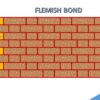Tiling a tub surround has never been easier. It’s actually one of the easier DIY projects out there. But when you’re trying to tile up against a tub in your bathroom, it’s not always so simple. That gap between the tub and cement board can be tricky to work with, especially if you don’t have experience working with cement board, which can be rigid and unforgiving to work with at times.
What to do with gap between tub and cement board?
You’ll want to fill the space where the tile meets the tub with a caulking material, ASTM C920 (e.g. silicone). Additionally, you may also want to cut some weep holes to allow water trapped behind the tile to be drained back into the tub.
How do you fill gap between bathtub and wall?
First, you’ll need to determine why you have a gap between your tub and cement board. If it’s due to a defect in your materials or installation, you might need to call in a professional for repairs. However, there are some DIY fixes that will work for most problems.
If your bathtub has accompanying tile walls, you will use the color of the grout as a determining factor for what type of caulk to use. For the gap is wider than 1/8 inch, use standard caulk. if the gap is narrower than 1/8 inch, use silicone. Anyhow, you may want to fill gaps wider than 1/8 inch with sanded caulk. First, the space must be cleaned and dry. The caulk must be applied carefully, in an even layer.

Does cement board go over tub lip?
If you have a fiberglass tub, you can’t install a cement board directly over it. The fiberglass will mold around cement board, which is just not okay. If your tub is cast iron or acrylic, it’s fine to go over that with board. You also need a special transition piece that fits between your tub and cement board.
The best way to install cement board around a tub is to keep the cement board out of the edge of the lip. Instead, the bottom edge should be approximately 1/4 inch from the tub. to install a floor tile above the lip of the tub, apply a thin layer of cement on the bottom of the tub’s tiles and position the new tile 1/8 inch below.
How big of a gap can I caulk?
If you have a small gap (1/8 inch or less), a caulk can usually handle it. For gaps larger than that, you’ll need a good sealant. Apply sealant to both sides of your tub-cement board joint, then smooth it out with a putty knife.
If a space is smaller than 1/4 inch, apply a single bead of caulk to the edge. However, if the space is larger than this, put the bead of caulk in the deeper edge of the space, but not all the way at the top. Let the caulk fully cure before you place a sealant over it.
Is it better to caulk or grout around tub?
Whether you are remodeling your bathroom or building a new home, you will have a gap between your tub and cement board. Is it better to caulk or grout? Grouting is a way of filling gaps in concrete with mortar that gives people flexibility in terms of design as well as appearance. However, grout has some drawbacks, including difficulty cleaning grout lines. However, when compared with caulk or other filler options, it’s stronger than all of them.
When joining a tile floor and a tub, caulk is best as grout does not flex. Grout provides less sealant than caulk.
How do you seal around a bathtub?
Luckily, there are a number of solutions for how you can fix a gap between your tub and cement board. One method is using bathtub sealant. If you’re not familiar with it, bathtub sealant is used in bathrooms as a moisture barrier.
It works to prevent moisture from getting behind your tub or shower tile, which helps prevent mold growth and water damage. Bathtub sealant should be available at most home improvement stores—it comes in tubes similar to caulk.
You can learn to re-caulk your tub and give it a fresh new seal in 4 easy steps.
- Remove old caulk.
- Scrub caulk residue with soft rag.
- Tape off the wall.
- Smooth out the caulk with a lint-free rag or paper towel.
What goes behind cement board in shower?
There are a number of products available to fill gaps between your tub and cement board, but there are a few reasons you may want to consider an alternative. Polyurethane foam is common because it’s available in different densities; however, these don’t come with a vapor barrier.
If you live in an area with humid summers or freezing winters, you may have problems if moisture can get behind your cement board. Additionally, polyurethane is often treated with flame retardants which can be toxic if inhaled or ingested (don’t worry – these won’t show up on your skin). The third option is to use glass-mat technology which has a vapor barrier integrated right into it so there’s no need for another layer down.
Choose from several moisture-resistant materials when waterproofing tiles, including cement board, which includes a cementitious core, and sheet of material that includes two layers of glass mats.
Do you have to put cement board under tub?
Before you install your tub, check with a contractor. They can help you decide if you need cement board for extra support. Though not required for every tub installation, cement board does prevent water from seeping behind your tub, which can lead to problems with mold and mildew later on. Anyhow, we recommend that after you install your new bathtub, be sure to set up a cement board under it.
If installing cement board isn’t an option due to price or time constraints, look into getting a fiberglass shower pan instead. While there’s some debate over whether or not it’s as effective as cement boards in preventing moisture damage over time, they’re certainly easier (and cheaper) to install than a separate tub and cement board combination! In any case, always make sure that whichever shower flooring option you choose allows for ample ventilation between it and your subflooring beneath.
Do I need to seal cement board before tiling?
Before tiling, yes. No, you don’t need a professional to do it for you. Water is always looking for places to go in your bathroom—via faucets, drains and cracks in your tilework. If there’s any chance water will find its way behind your tile (and trust us, there is), using cement board with an integrated silicone barrier will help prevent potential water damage.
It’s not absolutely necessary with all materials or on every project but we highly recommend it. Doing so before tiling will save you time, money and hassle down the road by preventing additional labor costs later down the line.
In spite of not being water-resistant, backerboards are still stable when exposed to moisture. However, this shouldn’t lead one to the misconception that they’re waterproof; they still need a barrier to stop water from seeping through.



















